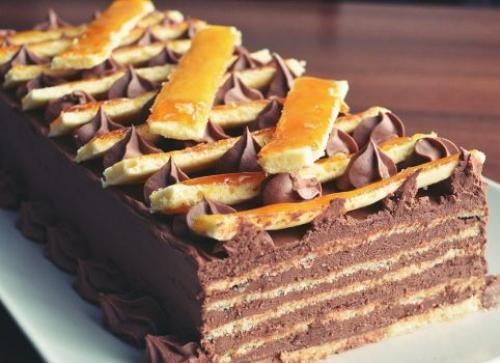Ultrasound therapy - therapeutic indications and benefits

is a medical or therapeutic procedure that uses high-frequency sound waves to treat musculoskeletal pathology such as muscle contracture, muscle spasm, joint stiffness and others. Article content\n \n \n . ro or from the SfatulMedicului mobile application (iOS, Android)\n . 000 Hz. The human ear perceives sounds of maximum 16-20. 000 Hz.
Thus, frequencies that exceed this threshold are called ultrasound. They can be divided into low frequency ultrasounds (20. 000-100. 000 Hz), medium frequency (100. 000-300.
000 Hz) and high frequency (300. 000-3. 000Hz). In the medical field, ultrasound has a number of uses, being useful both in and in treatment. The devices that are used in physiotherapy provide ultrasound with a frequency between 800.
000-1. 000 Hz. It represents one of the preferred and popular methods of treatment, having the ability to stimulate healing and reduce pain. Three mechanisms of ultrasound production can be described. These are represented by the mechanical, magnetic and piezoelectric process.
The piezoelectric process is used in current devices. More precisely, the inverted piezoelectric effect characterizes the current equipment and is based on the conversion of electrical potential into mechanical energy when it crosses the quartz crystal inside the transducer head. This quartz crystal has the ability to compress and expand in a certain direction and to produce longitudinal mechanical oscillations that propagate in the target tissue that is to be treated. Ultrasound medical equipment\r\n. The transducer is the device inside which the form of energy is converted into an ultrasonic one.
It has the piezoelectric crystal (quartz stone) inside the head which is covered by a metal plate. The first devices weighed about 60 kg. Currently, they have a much lower weight, managing to have a small weight of approximately 2 kilograms. These devices are provided with screens and buttons that allow the adjustment of the desired parameters, such as the ultrasound intensity measured in W/cm2, the duration of the treatment or the desired pulse regime (pulsed or continuous). Ultrasound in pulsed mode, also known as discontinuous mode, consists of rectangular, triangular, trapezoidal pulses that do not overload the target tissue to be treated, because there is also a pause in their emission.
This type of pulsed ultrasound treatment is recommended in acute conditions, having a muscle relaxant and analgesic effect. It is usually recommended for affecting soft parts, such as. Continuous ultrasound consists in the fact that there is no interruption during the entire treatment, thus resulting in an accelerated and deep thermal effect. This type of regimen is indicated in the treatment of chronic conditions. Since heat is produced in this type of regimen, it is recommended especially in musculoskeletal pathology, such as, , joint swelling, etc.
. Ultrasound treatment must be prescribed by the Physical Medicine and Rehabilitation doctor who knows the properties and effects of this type of treatment. The handling of the transducer can be done in a mobile field with smooth movements on larger areas, a semi-mobile field with emphasis on the affected areas, smooth movements on small areas or a static field that is rarely used, because it requires considerably the target tissue. The patient following the treatment must perform local hygiene and it is recommended that the hair be shaved in the treated area to ensure a good contact. It is important for the patient to know the procedure to be performed and to be cooperative, because he will have to not move the treated area and announce any discomfort that occurs.
Before the ultrasound treatment, the skin must be inspected and there must be no damage to it. The patient must sit in a comfortable position, but which allows direct contact of the transducer with the skin for the effective application of the therapy. In order to be able to transmit ultrasound, a coupling medium is normally needed. Direct coupling is the most used. It is applied on flat, smooth body surfaces, without injuries.
The substance is applied directly to the area to be treated. This can be represented by gel, vaseline, glycerin, paraffin. There is also the indirect coupling method, which uses water as the coupling medium. Here the coupling is uniform and the regions and body segments with relief irregularities (hand, foot) can be properly treated. Ultrasonophoresis means the use of medicinal substances and ultrasound with the aim of favoring their penetration in depth.
Using ultrasonopheresis, the medicinal substances in the contact solution penetrate more easily into the targeted area for therapy with the help of ultrasound. Most frequently, ultrasonophoresis is used for the treatment of inflammation, and the typical drugs used are anti-inflammatory gels, corticosteroids, anesthetics or vasodilators. In skin infections, local antibiotics can also be used for treatment. The duration of the treatment is given by the size of the areas to be treated. The minimum duration is 1-2 minutes, and the maximum 8 minutes, but the standard duration for a session normally lasts about 5 minutes.
The absorption of emitted energy depends on the frequency, intensity, tissue characteristics and cycle duration. Thus, at high frequencies (3MHz) the energy is mostly absorbed on the surface and will no longer reach the target, and at low frequencies (1MHz) the ultrasound penetrates deep. We use a pulse frequency of 1 MHz to treat deep tissues from 2. 5 cm by 5 cm in depth (supraspina muscle, small round muscle, etc. ) and we use a pulse frequency of 3 MHz for superficial tissues up to 2.
5 cm from the skin (patella tendon, etc. The intensity is expressed in W/cm2 and refers, in fact, to how hard we turn on the device. The intensity that can be used with current devices varies between 0. 05-3W/cm2, but new devices have an upper limit of 2W/cm2. It is chosen according to the size of the area to be treated, the depth where the problem is and the type of injury.
The dosage depends on the treated area, the thickness of the tissues and the depth of the place to be treated, as higher intensities are needed in deeper areas. It must also be taken into account if we are dealing with an acute or chronic condition, because in the case of acute conditions, the intensities are lower, and in chronic conditions, the intensity must be increased. For the first sessions, small doses of 0 are recommended. 05-0. 5 W/cm2.
The maximum limit of ultrasonic energy transmitted to the patient must not exceed 0. 8-1 W/cm2. For example, large values \u200b\u200bof 0. 8-1 W/cm2 can be used for. The recommended number of sessions is usually 10-12 sessions.
The application time is a maximum of 10-15 minutes in the case of treating several areas and a maximum of 5 minutes on a single area. The patient's cooperation is important, and in the event of any discomfort, it must be announced. Sensations that can be felt are: slight warmth, pain relief, fatigue, headache, tingling. It is indicated that the ultrasound therapy is not immediately followed by other procedures by or by. Bibliography\r\n.
physio-pedia. com/Therapeutic_Ultrasound\r\n\r\n. webmd. com/pain-management/what-to-know-about-ultrasound-physical-therapy\r\n\r\n\r\n\n\n \n \n\n \n \n \n \n \n . Dan belt\n .
Delia Cinteza\n . Christian Angel\n . CONSTANTIN ANGELESCU (former Interdepartmental Al. Sahia - under the jurisdiction of the Ministry of Justice)\n \n \n . Mariana Racu\n .
.
Source : sfatulmedicului.ro
Views : 1070
Popular Article
- (photo) Nude becomes art.
Posted: 2018-03-17, 9749 views.
- The harmful effects of air conditioning on the skin
Posted: 2017-06-08, 8454 views.
- 3 causes of dyed hair discoloration
Posted: 2017-06-15, 8331 views.
- Why early puberty occurs in girls: symptoms, favors, diagnosis and treatment
Posted: 2017-10-24, 8178 views.
- Good or bad skin treatments in the hot season
Posted: 2017-06-07, 7908 views.
Recommendations
- (photo) Nude becomes art.
Posted: 2018-03-17, 9749 views.
- The harmful effects of air conditioning on the skin
Posted: 2017-06-08, 8454 views.
- 3 causes of dyed hair discoloration
Posted: 2017-06-15, 8331 views.
- Good or bad skin treatments in the hot season
Posted: 2017-06-07, 7908 views.
- Risks of practicing sports on hot days
Posted: 2017-06-12, 7494 views.
 4 effective ingredients in the fight against acne.
4 effective ingredients in the fight against acne. How to get rid of hiccups fast
How to get rid of hiccups fast The wheat bran diet: the secret of lost pounds as if by magic
The wheat bran diet: the secret of lost pounds as if by magic The recipe that will sweeten your soul this weekend!
The recipe that will sweeten your soul this weekend!  Is it dangerous or not to refreeze meat after thawing it?
Is it dangerous or not to refreeze meat after thawing it?  The unusual sign of diabetes indicated by saliva.
The unusual sign of diabetes indicated by saliva. What to drink to boost your immune system.
What to drink to boost your immune system. 10 foods that help you never age.
10 foods that help you never age. What actually happens in your body if you drink a cup of coffee for breakfast
What actually happens in your body if you drink a cup of coffee for breakfast 5 surprising benefits of chia seeds
5 surprising benefits of chia seeds